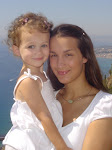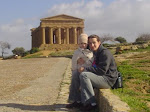 Orchestra Featuring Ella Fitzgerald is the album I chose to review. The album was released in 1981 in the genre of Big Band; Jazz. The album consist of ten songs each quite short in length but long enough to enjoy the young voice of Ella Fitzgerald and the big band instrumental sound from Chick Webb and his orchestra.
Orchestra Featuring Ella Fitzgerald is the album I chose to review. The album was released in 1981 in the genre of Big Band; Jazz. The album consist of ten songs each quite short in length but long enough to enjoy the young voice of Ella Fitzgerald and the big band instrumental sound from Chick Webb and his orchestra. In 1935 Ella Fitzgerald was discovered at the young age of sixteen-and-a-half by emcee Bardu Ali, this discovery was said to be “perhaps the greatest distinction given to the band”. Ella recorded tracks on the album heightening the already soaring Webb orchestra. Ella’s voice was an infectious force that contributed to the orchestra. This album allowed
 me to hear the early sound of Fitzgerald, where later recordings share a more polished voice. Still young, she was able to stand up with one of the best big bands of the 1930's. Ella Fitzgerald died in 1996 from debilitating diabetes.
me to hear the early sound of Fitzgerald, where later recordings share a more polished voice. Still young, she was able to stand up with one of the best big bands of the 1930's. Ella Fitzgerald died in 1996 from debilitating diabetes. William Webb bought his first drum set at the age of eleven and joined his first band, from then he traveled to New York and made name for himself, Chick Webb. Webb was the drummer of his thirteen piece orchestra and he was amazing at orchestrating challenges and winning Battles of the Bands against the greatest, including Benny Goodman. Chick Webb battled illness throughout his life. He contracted tuberculosis of the spine as a young child which obviously did not inhibit him from greatness, but did catch up to him in his later years. At the young age of thirty he passed away due to his long term illness.
When I first listened to the album I laughed as it reminded me of episodes of Tom and Jerry. I could literally see Tom chasing Jerry as the orchestra played to their every move. This album makes you want to move, it took me back to a time that I have only seen in movies, read about and listened to.
Liner Notes
Jasen, David. Chick Webb & his Orchestra Featuring Ella Fitzgerald. Folkways Records FJ 2818. 24 Nov. 2007
<http://media.smithsonianglobalsound.org/liner_notes/folkways/FW02818.pdf>.
Photos
Drummerworld. Chick Webb. 24 Nov. 2007
<http://www.drummerworld.com/drummers/Chick_Webb.html>.
Smithsonion Folkways Recordings.
<http://www.folkways.si.edu/search/AlbumDetails.aspx?ID=467#>.
This post is my response to the Album Review Project.








